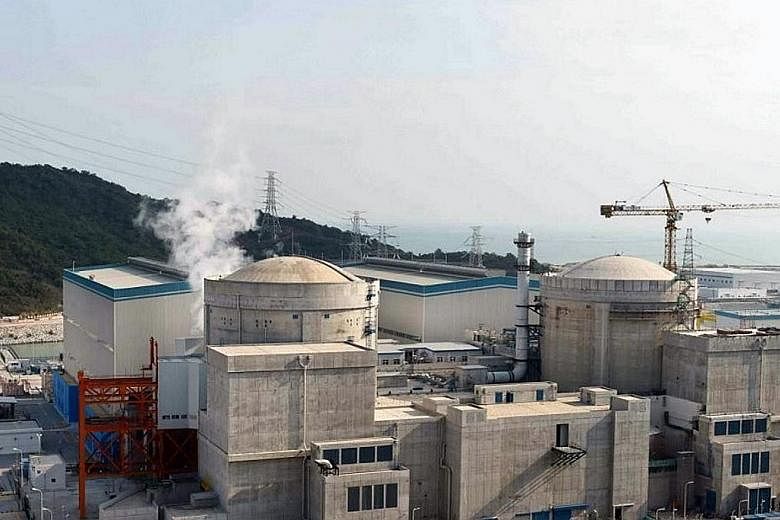China has held its first comprehensive national-level emergency drill to deal with potential nuclear accidents, seeking to allay safety and security concerns over its aggressive nuclear-power expansion programme that has run into obstacles domestically and overseas.
The drill, code-named Storm-2016, was held on Saturday night to test the effectiveness of the nuclear security system and the emergency response mechanism, the State Administration of Science, Technology and Industry for National Defence said on Sunday.
"The drill was held on the principle of real-life battle. It was not scripted and did not have a planned result... The drill met expectations," the administration said on its website.
China last held national nuclear emergency response drills in 2009 and 2015. Drills are also held by provincial governments once every two years and by nuclear firms such as the China National Nuclear Corp and the China General Nuclear Power Group once yearly.
But the Saturday drill is described as the first comprehensive exercise, though no details were given on the location of the drill, which could have been withheld to avoid stirring concerns among locals, said Tsinghua University's nuclear safety expert Gui Liming.
"If the authorities revealed the province in which the drill was held, local residents might interpret it as a sign of poor safety standards there and become more concerned," he told The Straits Times.
There were also no details on the scale of the drill, but Dr Gui said it is likely to have involved a national nuclear emergency response task force set up in January this year to handle serious accidents and to take part in overseas operations.
He added that more details on the drill should be revealed soon to boost confidence in China's nuclear safety system, amid a rapid expansion programme as part of efforts to tackle air pollution and greenhouse gas emissions, and cut dependence on imported oil and gas.
China, which began building its first nuclear power station in 1985, now has 34 reactors in operation and 20 under construction, mostly located in coastal provinces like Guangdong.
It is aiming to build six to eight reactors yearly till 2020, with the total number expected to reach 110 by 2030, overtaking the 99 in the United States, the world leader now.
China had restarted its reactor-building programme last year following a suspension soon after the March 2011 nuclear disaster at Japan's Fukushima power plant.
Reflecting growing confidence in its Hualong One nuclear technology, China has been inking deals to build nuclear plants for countries like Pakistan and Britain.
But nuclear safety remains a concern for many - even among Chinese nuclear experts - with protests breaking out on Saturday in coastal Jiangsu province's Lianyungang city over a new nuclear fuel-recycling project.
Thousands of residents in Lianyungang reportedly gathered in a local square on Saturday, chanting "no nuclear fuel-recycling project in Lianyungang", according to video footage sent to the Global Times tabloid by one of the protesters.
The project, which is backed jointly by China and France, is expected to handle 800 tonnes of nuclear waste produced yearly by China's nuclear power plants. Construction is set to begin in 2020.
An employee of the Lianyungang government told the Global Times that it has not been decided whether the project would be launched in the city, adding that the local authority has no say, given its status as a national-level project.
Critics say concerns over China's nuclear power plants are valid, given the country's poor track record of industrial safety, with major accidents taking place in recent years, like the Tianjin chemical warehouse explosion in August last year.
Not helping China's case were media reports last Friday that four officials at the Yangjiang nuclear power plant in Guangdong had breached safety guidelines that caused a reactor to stop functioning for a while last year and then tried to cover up their mistakes.
A Chinese nuclear deal to build a plant at Hinkley Point in the south- western part of Britain is also at risk of being scuppered under new British Prime Minister Theresa May over national security concerns.
But Dr Gui said concerns over China's nuclear safety might be overblown as the country has tightened safety regulations and upgraded technology in the aftermath of the Fukushima accident.
"The authorities can assuage concerns by holding more emergency response exercises and being more proactive and transparent in its enforcement against safety lapses at nuclear power plants," he said.

